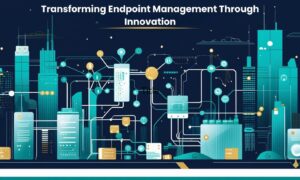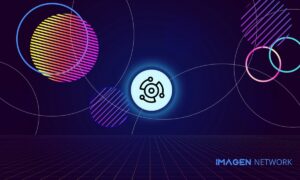The world of enterprise mobility is shifting quickly. With hybrid work now a standard for many organizations, the need for streamlined digital experiences and secure endpoint management has never been greater. Aditya Shrotri, a senior software engineering manager at Omnissa, is leading this transformation. He is reshaping how businesses approach endpoint management through his creativity, offering practical and forward-thinking solutions.
Aditya Shrotri’s work spans advanced patents, advancements in Unified Endpoint Management (UEM), and contributions to the low-code revolution. His career path exemplifies how thoughtful engineering and leadership can address some of the most pressing challenges in today’s technology environment.

Aditya Shrotri
Solving Big Problems in Endpoint Management
Enterprise mobility management is undergoing a significant transformation. Companies are adapting to hybrid work by managing various devices, platforms, and security threats. The stakes are high, with rising cybersecurity concerns placing a spotlight on endpoint security systems.
At Omnissa, a VMware spin-off, Aditya Shrotri has focused on making endpoint management smarter, faster, and more secure. “The future of endpoint management lies in autonomous, predictive systems that adapt to an ever-changing digital environment,” he says. “At Omnissa, our mission is to simplify complexity while ensuring solid security.”
Patents That Address Real-World Challenges
Aditya Shrotri’s patents highlight his ability to solve problems with precision. Two of his most impactful patents stand out for their advanced approach to endpoint management. These patents have addressed gaps in endpoint management, tackling real-world challenges with advanced solutions.
The first patent, Unified DLP Policy Management (US 11743124 B2), resolved the complexities of managing Data Loss Prevention (DLP) policies across multiple platforms and devices. Before this development, enterprises needed help coordinating these policies effectively, often jeopardizing major deals with Fortune 50 clients. Aditya Shrotri developed a unified system that streamlined the deployment and management of DLP policies, creating a more secure and efficient framework.
“This patent was born out of necessity,” he explains. “IT administrators needed a single console to manage DLP policies effectively. It was not just about convenience but also securing data across a decentralized environment.”
The second patent, Device-driven Management Workflows (US 20230403302 A1), tackled the growing challenges posed by the Bring Your Own Device (BYOD) trend. With an increasing number of personal devices used in professional settings, maintaining compliance has become a significant issue for enterprises. Aditya Shrotri’s work introduced a system for real-time device state management through automated workflows, ensuring that devices remain compliant while addressing the unique demands of BYOD environments.
Reflecting on the significance of these developments, Aditya Shrotri remarks, “These patents emphasize adaptability in endpoint management. The goal is to solve challenges proactively and efficiently.”
Making Automation Accessible
One of Aditya Shrotri’s most notable achievements is the development of Freestyle Orchestrator, a low-code platform within Omnissa’s UEM suite. It allows IT teams to automate workflows for deploying apps and configurations, boosting efficiency by 10 times.
“The idea was to give IT teams tools that do not require heavy coding expertise,” he says. “Freestyle Orchestrator makes automation accessible, regardless of an organization’s size.”
This platform has delivered significant results, driving over $150 million in cumulative revenue growth for Omnissa. Beyond its financial success, it has set a new benchmark for low-code automation in the enterprise mobility industry.
Modernizing Systems and Enhancing Security
Aditya Shrotri also played a key role in modernizing Omnissa’s UEM platform by transitioning its architecture from monolithic to microservices. This move enhanced scalability, performance, and modularity, enabling quicker feature deployments and reduced downtime.
In addition, Aditya Shrotri spearheaded the development of Unified Endpoint Security (UES) solutions. These tools integrate real-time vulnerability assessments using data from the National Vulnerability Database, allowing businesses to identify and resolve security risks more effectively.
“This was not just a technical upgrade,” he says. “It was a shift in how we think about scalability and adaptability in endpoint management.”
Aditya Shrotri’s work has impacted over 26,000 enterprise clients, including airlines, universities, and Fortune 500 companies. His contributions have improved operational efficiency, simplified workflows, and enhanced security.
One standout partnership is between Omnissa and CrowdStrike. By integrating Omnissa’s platform with CrowdStrike’s Falcon cybersecurity tools, the collaboration has enhanced security for hybrid work environments. This partnership reflects Aditya Shrotri’s focus on merging endpoint management with advanced security solutions.
Looking to the Future
As enterprise mobility continues to evolve, Aditya Shrotri is focused on the next big opportunities. He envisions endpoint management becoming increasingly autonomous, with artificial intelligence playing a more prominent role. “In five years, I see endpoint management systems predicting and adapting to challenges in real-time,” he says. AI will make security smarter and workflows more seamless.”
Omnissa is already building toward this vision. The company is expanding its cloud-native UEM offerings and integrating predictive analytics, ensuring it stays ahead of industry demands for secure, device-agnostic solutions.
Aditya Shrotri’s work at Omnissa shows how innovation and leadership can tackle complex technology challenges. His contributions have set a new standard in endpoint management, from his patents to his leadership in modernizing systems. As organizations worldwide integrate hybrid work and increase cybersecurity risks, Shrotri’s work provides a formidable example for building secure, efficient, and adaptive digital work environments.
































